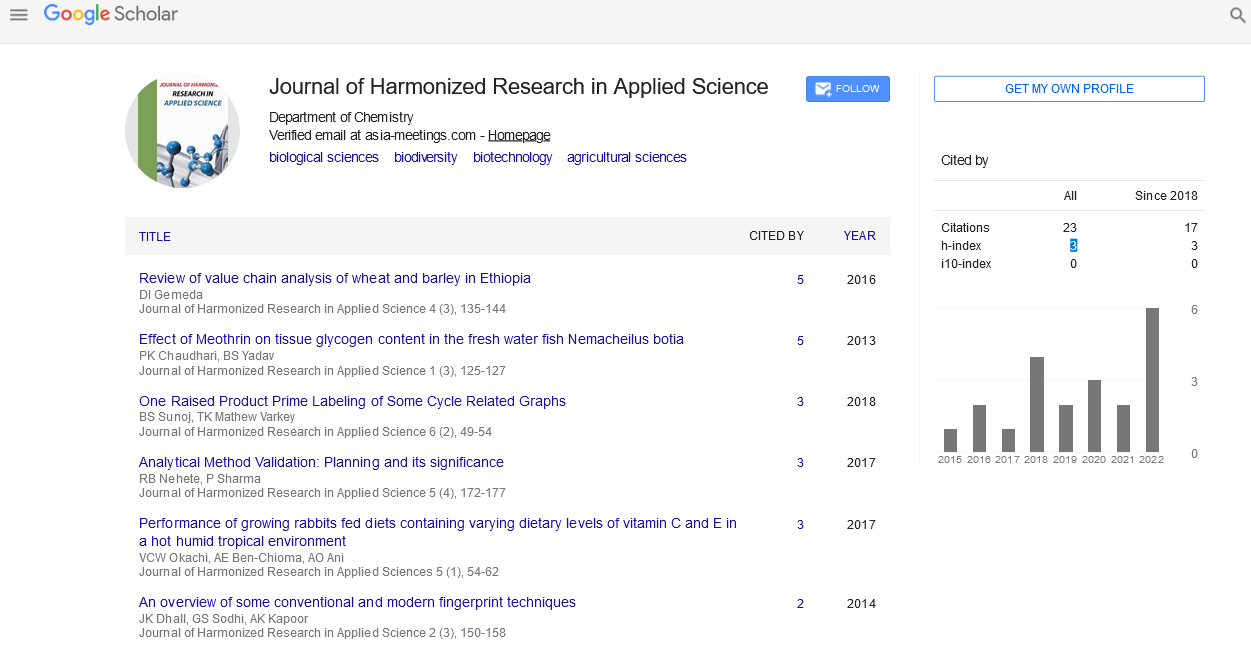Commentary - (2022) Volume 10, Issue 3
APPLICATIONS OF PROTEIN ENGINEERING FOR ENZYME SYNTHESIS
Georgina Mills*Received: Aug 26, 2022, Manuscript No. JHRAS-22-78057; Editor assigned: Aug 30, 2022, Pre QC No. JHRAS-22-78057(PQ); Reviewed: Sep 14, 2022, QC No. JHRAS-22-78057; Revised: Sep 21, 2022, Manuscript No. JHRAS-22-78057(R); Published: Sep 28, 2022, DOI: 10.30876/2321-7456.22.10.004
Description
Applications of Protein engineering is the design of new enzymes or proteins with new or desired functions. It is based on the use of recombinant DNA technology to alter amino acid sequences. Protein engineering is the process of modifying protein structure to confer new and/or desirable properties on proteins, such as activity, solubility, affinity, stability, specificity, and resistance. Therefore, the rate of protein development can be increased. Creative bio-structure uses high-intensity synchrotron radiation to obtain high-resolution X-ray diffraction data for lead optimization of small and large molecules of proteins. Rapid developments in the biological sciences, and specifically in recombinant DNA technology, have made a wide variety of protein engineering methods available today. The most classical method of protein engineering is the so-called ‘rational design’ approach, which involves ‘site-directed mutagenesis’ of proteins. Site-directed mutagenesis allows the introduction of specific amino acids into target genes. There are two common methods for site-directed mutagenesis. One is called the “overlap extension” method. This method involves two primer pairs. One primer in each primer pair contains a mutated codon with a mismatched sequence.
These four primers are used in the first Polymerase Chain Reaction (PCR), where two PCRs are performed, resulting in two double-stranded DNA products. After denaturation and annealing, two hetero duplexes are formed, each strand of the hetero duplex containing the desired mutagenic codon. Various enzymes are used in various industries such as food, paper, leather, cosmetics, pharmaceuticals, and chemicals. Since the early 1990s, scientists have started protein engineering to create new enzymes for the biotechnology industry. Basically, the food industry uses a wide variety of enzymes, including proteases, lipases and amylases in food processing. These processes mainly require high temperatures, various pH ranges, and there are also many other compounds that can inhibit/inhibit enzymatic activity. To overcome these problems and further improve their production and activity, enzyme properties such as specificity, thermo stability and catalytic activity are improved using the novel protein engineering approaches. Proteases are used in many industrial processes. Examples including detergents to remove biofilms in the paper industry, milk coagulants, meat tenderizers, flavorings, and protein stain removal in the food industry. Protein engineers are working to develop engineered proteases that function more efficiently at low temperatures and alkaline pH. Maxapem and Durazym are new bacterial alkaline proteases with improved catalytic activity and improved stability at elevated temperatures against different cleaning conditions and oxidants. These are engineered by generating mutations using site-directed and random mutagenesis. Protein engineering and cloning techniques have enabled the production of commercially available proteases with the required pH and temperature activity and stability. Through protein engineering, bacterial species produce large amounts of enzymes under various stress conditions.
Amylases are used in many industries for function doubling. For example, in the food industry it is used to soften bread, customize flour, liquefy and roughen starch, and process juices. In the detergent and paper industry, these enzymes are used to remove starch stains and remove ink. For the production of various food and industrial products, starch is either converted to bioethanol or processed into fructose, glucose and organic acids in microbial fermenters that require biocatalysts such as amylases for liquefaction and chopping. Protein engineering and recombinant DNA techniques have been used to improve amylase activity and stability under harsh conditions. Scientists have developed a genetically engineered Bacillus α-amylase by making hybrids that incorporate proline residues in the loop region and performing random mutagenesis.
Protein engineering has numerous applications in the therapeutic field. Previously, protein engineering was performed to obtain second-generation recombinant proteins with properties essential for clinical applications. Mutation, DNA shuffling, and recombinant DNA approaches have been used in protein engineering to achieve better results for therapeutic proteins. Subsequent advances in protein engineering have led to the production of secretory therapeutic proteins such as interferon and insulin, the use of therapeutic combinatorial proteins, and the development of gene therapy by inducing recombination using mega nucleases and DNA double-strand breaks. Improvements in protein engineering lead to several other important medical applications.










